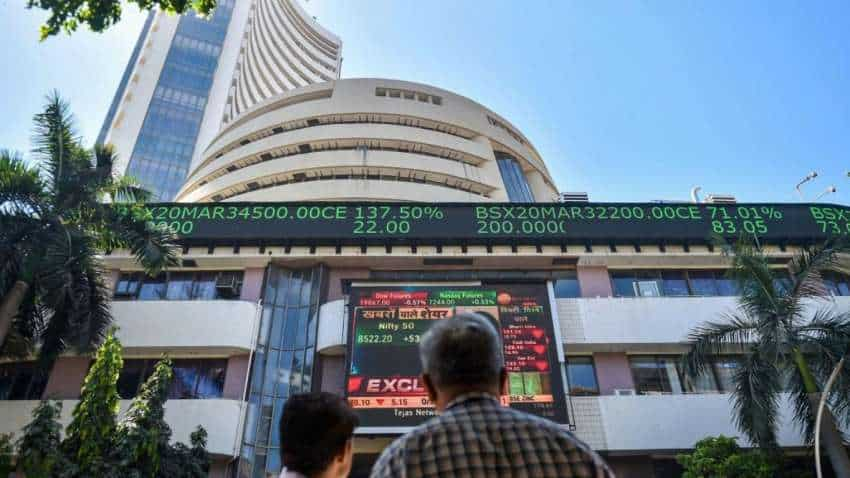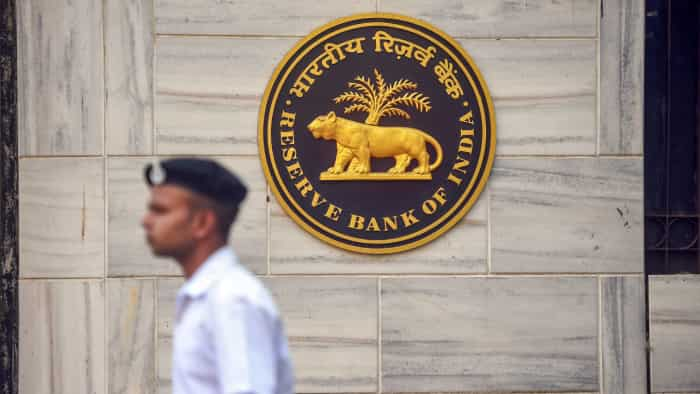Year-Ender 2022: Mid and SmallCap indices put a mute show this year so far – analysts explain what led to the dull performance
In comparison, both the frontline indices – NSE Nifty50 and BSE Sensex – each have gained around 6 per cent year-to-date (YTD) as of December 14, 2022.

Year-Ender 2022: Unlike last year, the broader markets like Mid and Smallcap have underperformed the benchmark indices – Nifty50 and Sensex – this year so far. Both BSE Mid and Small Cap have recovered in the trade by turning positive with a marginal rise of over 4 and 0.5 per cent, respectively, in 2022 so far.
In comparison, both the frontline indices – NSE Nifty50 and BSE Sensex – each have gained around 6 per cent year-to-date (YTD) as of December 14, 2022.
The underperformance by Mid and Small Cap indices was mainly on the back of higher valuations at the start of the year, besides, investors preferred large-cap compared to broader markets, several analysts said in their comment on the mute show by both these indices.
Rahul Sharma, Research Head, Equity 99 said that generally, mid-cap and small-cap always attract investors since these are anticipated to grow faster than the industry and economy. “This sector remained almost on flat tone amid improving global market and a fall in crude and commodities,” he added.
According to Vinit Bolinjkar, Head of Research, Ventura Securities, “Nifty50 is trading at CY23 P/E of 18.7X, while Nifty Midcap is at 22.2X and Nifty Smallcap is at 16.4X. YTD flat gains reduced the valuation of the Nifty Smallcap, however, Nifty Midcap is still expensive.”
Here are the views we have collated from different experts on the broader markets performance in 2022:
Expert: Dr. Poonam Tandon, Chief Investment Officer at IndiaFirst Life Insurance
We agree that valuations in select mid-cap and small-cap space look attractive given most of these companies are nearing their capacity expansions and sitting on the healthy balance sheet. From here on we expect broader indices to outperform in coming quarters, as all current issues — both global and domestic — are starting to settle down, especially the geopolitical and supply side concerns.
Expert: Shikha Mehta, Research Analyst, Equitree Capital Advisors
The broader markets have taken a substantial beating with individual stocks seeing corrections ranging from 20-75 per cent. There have been only a few companies that have been able to post good numbers and maintain resilience.
Expert: Amar Ambani, Group President & Head - Institutional Equities Head, YES SECURITIES
Mid and Small companies generally don’t tend to have pricing power compared to their larger peers and are on the upper side of the cost curve.
Hence, as demand dropped due to a slowdown in the global economy along with rising inflation and supply chain issues, a lot of small and mid-cap companies saw a sharp drop in their margins, thereby impacting their earnings. Bleak growth prospects also led to sell off and underperformance.
Expert: Sumit Chanda, Founder & CEO, JARVIS Invest
The true picture of BSE Mid and Small-Cap indices is that they have clocked 20 and 19 per cent rise respectively in the last 6 months. This reflects the growing risk appetite of the investors.
The Association of Mutual Funds in India (AMFI) data clearly shows that the percentage share of mid and small-cap funds in the month of October stood at almost 50 per cent. These two segments look very attractive today from a valuation perspective.
Historically, whenever midcap PE has been at par with that of large caps, we have seen both mid and small cap delivering higher returns from a 1 to 5-year horizon.
Expert: Apurva Sheth, Head of Equity Research, Samco Securities
Mid-caps showed resilience with a positive return of 4 per cent indicating that the investor’s risk appetite had not completely waivered and is ready to absorb some uncertainty. However, fear grappled market participants when it came to investing in small-cap indices.
Given the high risk led volatility levels of the segment, the market participants prefer staying afar than feeling the brunt. However, from valuations front both these indices are trading below Nifty’s PE. This indicates that there is scope for valuations to catch up if financial performance improves.
Expert: Sunil Damania, Chief investment officer, MarketsMojo
When there is global uncertainty and equity is not a preferred asset class, mid and small caps underperform as investors find comfort in large caps. The market's advance-decline ratio, which denotes how the broader market performed, demonstrates there are more declines than advances, indicating negative sentiments on mid and small caps.
Get Latest Business News, Stock Market Updates and Videos; Check your tax outgo through Income Tax Calculator and save money through our Personal Finance coverage. Check Business Breaking News Live on Zee Business Twitter and Facebook. Subscribe on YouTube.
RECOMMENDED STORIES

SBI Latest FD Rates: This is what you can get on Rs 10 lakh investment in 1-year, 3-year, and 5-year tenures

RBI Rule: New system for online money transfers to be implemented from April 1, 2025; here's all you need to know

Top 7 Large Cap Mutual Funds With Best SIP Returns in 10 Years: Rs 8,877 monthly SIP investment in No. 1 fund has jumped to Rs 28,69,944; see key details

Rules of 72, 114, 144 & 8:4:3: How long will it take for your Rs 50 lakh investment to become Rs 1 crore?
10:40 PM IST












 Year-Ender: 2022 sees 170% rise in share buybacks — Zee Business research analyst decodes trend
Year-Ender: 2022 sees 170% rise in share buybacks — Zee Business research analyst decodes trend Year-Ender 2022: How have precious metals – Gold and Silver performed this year? Analysts decode; highlight reasons
Year-Ender 2022: How have precious metals – Gold and Silver performed this year? Analysts decode; highlight reasons Will Indian equity markets continue to attract foreign investors in 2023 amid global uncertainties? Analysts decode
Will Indian equity markets continue to attract foreign investors in 2023 amid global uncertainties? Analysts decode Year-Ender 2022: Mutual Funds register muted show this year; analysts expect better days in 2023
Year-Ender 2022: Mutual Funds register muted show this year; analysts expect better days in 2023 Year-Ender 2022: What led to sluggish and sombre performance of IPO market this year? Experts decode
Year-Ender 2022: What led to sluggish and sombre performance of IPO market this year? Experts decode